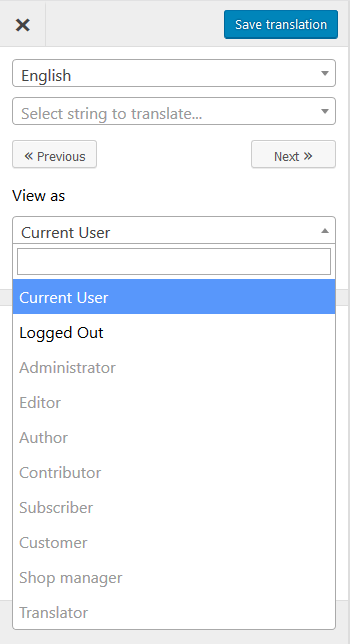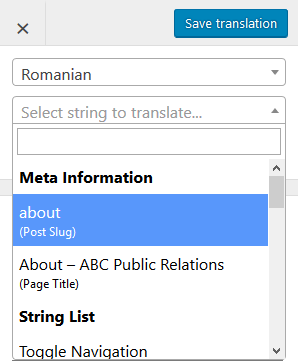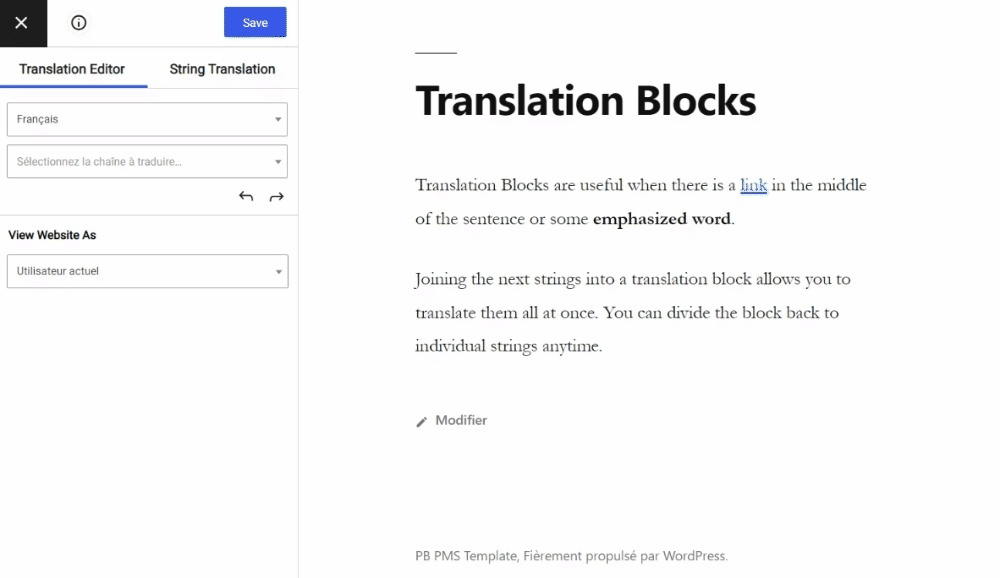The Translation Editor can be accessed from both the Settings page and from the Admin bar.
How to use the Translation Editor
Normally, you can access TranslatePress’ Translation Editor from the WordPress Admin Bar → Translate Site button.
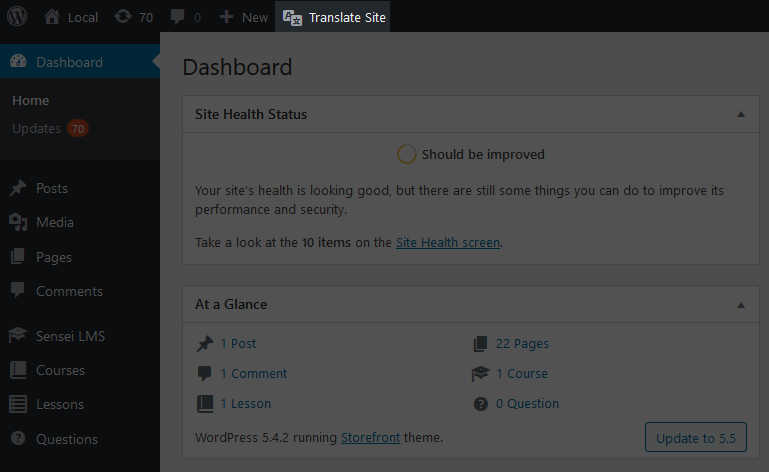
If the Admin Bar is not available (for example, wordpress.com hosting replaces the default admin bar with its own), you can access it from WordPress → Settings → TranslatePress → Translate Site.
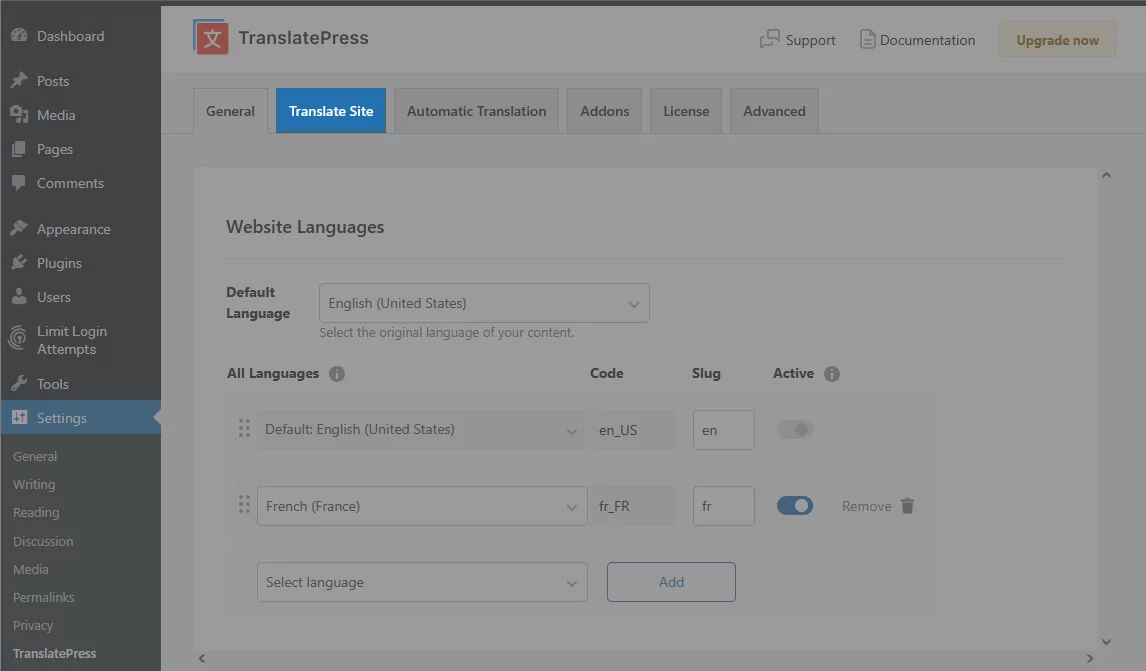
It’s a simple interface that allows you to translate your website page by page.
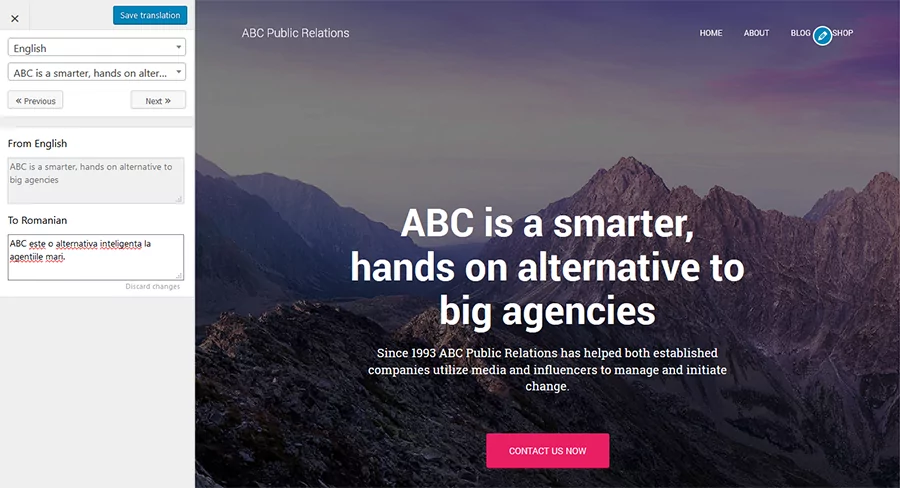
Edit visible text
The main functionality of the translation editor is the possibility to translate your entire page string by string.
Simply hover over a string, click the pencil icon  that appears on the left, and translate your string in the left translation interface.
that appears on the left, and translate your string in the left translation interface.
Changing language
Selecting a new language will allow you to preview and navigate your site in that particular language, making it a lot easier to notice untranslated strings.
Search for a string
Not all detected strings are visible on the page. Strings like SEO titles, meta descriptions, and sometimes other strings that don’t have the edit button  can be found by simply searching the list of strings.
can be found by simply searching the list of strings.
Browse As
You can browse your website from the translation editor as yourself (logged in) or as a non-logged-in user. This makes it easy to translate pages that are dynamic based on the logged-in/non-logged-in status.
You can navigate as a different user role with the Browse as Role add-on.
Translation Memory
If you change a string and add a symbol to it such as “.” this will invalidate the translation and that string will be treated as a new string with status 0 (0 means without translation).
TranslatePress will treat the second string as a new one and you’ll need to put a new translation to it.
To facilitate translation retrieval we implemented the Translation Memory feature.
If you go to the translation interface and select that string, the Translation Memory feature will show you translation suggestions for that string (based on other strings that you have translated in the past).
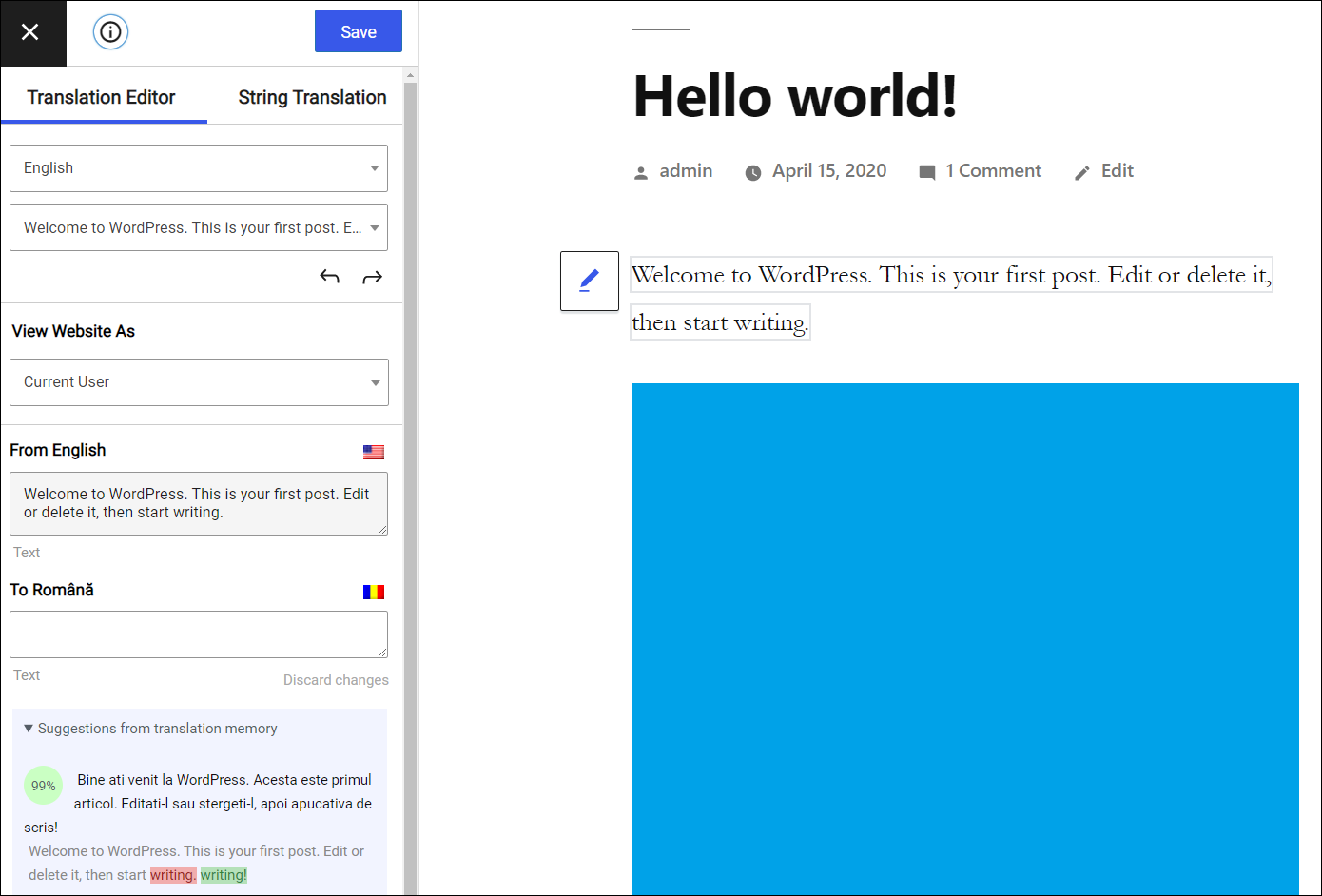
Translate SEO elements
The SEO Pack add-on is only available in the paid versions of the plugin.
Using this addon you can translate all the SEO elements from every page:
- URL post/page/custom post type slug
- page title
- page description
- image alt tag
- Facebook and Twitter titles and descriptions (these are usually added by your SEO plugin and appear when users share your content)
To translate the above, choose them from the string list under Meta Information.
TranslatePress works out of the box with all SEO plugins.
Using the SEO Pack add-on, TranslatePress will extend the sitemaps functionality added by SEO plugins and automatically create a multilingual sitemap that includes all your translated content.
Multilingual Sitemap support is added for the most popular SEO plugins:
- Yoast
- Rank Math
- SEOPress
- All in One SEO Pack
- Squirrly SEO
- Slim SEO
Having these important SEO elements translated, as well as creating a multilingual XML Sitemap will have a major impact on your site ranking in multiple languages.
Here’s a short video covering how to translate the most important SEO elements using TranslatePress and its SEO Pack add-on:
Translation Blocks
To translate larger blocks of HTML with a single translation you need to join multiple translation strings into a translation block.
Merging a string with its parent paragraph is done by hovering a string that you want to join with its surrounding strings within the parent. Click the arrow up Merge button 
Now the translation block will be translated as a whole. You can edit the translation by clicking the edit button  . When writing a translation for the translation block, be careful to insert a valid HTML in the translation block.
. When writing a translation for the translation block, be careful to insert a valid HTML in the translation block.
The translation block is not compatible with Gettext strings or strings dynamically inserted with JavaScript.
To go back to translating individual strings from a created translation block you need to hover it and click the arrow down Split button 
How to Translate words in different contexts
You can also specifically select any HTML block to be translated as a whole by adding the class translation-block to it. For example:
<div class="translation-block">
<div class="masc">Partner</div>
</div>
<div class="translation-block">
<div class="fem">Partner</div>
</div>
<div class="translation-block"> Translate <em>everything</em> <div>inside</div> </div>
Image translation
Find out how to show different images for different languages in our image translation documentation.
Link translation
Find out which links can be manually translated and which are automatically translated in our link translation documentation.
Keyboard Shortcuts
Take advantage of the Translation Editor’s keyboard shortcuts to speed up the translation process.
